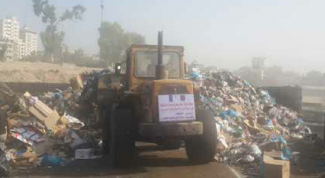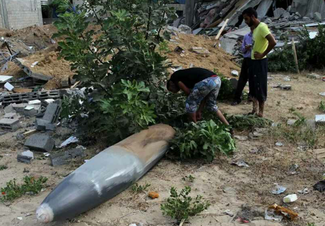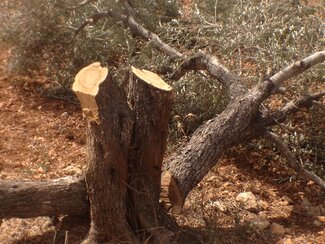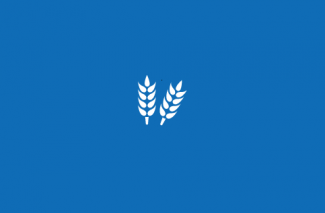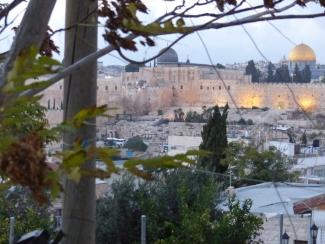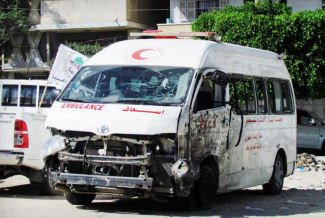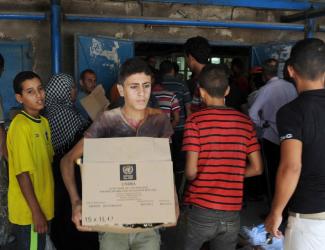Given the scale of the emerging crisis triggered by the July-August hostilities, it was critical to ensure that much needed resources would be on the ground as fast as possible. To ensure this, in addition to the regular funding to humanitarian agencies and the special funding obtained via the Gaza Crisis Appeal, the Humanitarian Country Team (HCT) mobilised over US$16 million from two pooled funds: the CERF, which is managed by a secretariat in New York on behalf of the Emergency Response Coordinator, and the ERF, which is managed in-country by the Humanitarian Coordinator with the support of OCHA and a technical review board of humanitarian partners and an advisory board of donors.
The Monthly Humanitarian Bulletin | September 2014
In this document
Over the course of hostilities, significant numbers of unexploded aircraft bombs, tank shells and other ammunition, from both Israeli forces and Palestinian armed groups, have been reported in civilian areas across the Gaza Strip. While the exact level of Explosive Remnants of War (ERW) contamination is unknown, based on the scope of damage to buildings and a minimum failure rate of 10 per cent, the UN Mine Action Service (UNMAS) estimated that a minimum of 7,000 explosive items remain to be secured or destroyed.
The Palestinian Ministry of Agriculture (MoA) announced that 3 October is the official start of the olive harvest season. The annual olive harvest is a key economic, social and cultural event for Palestinians. Approximately half of the agricultural land in the oPt is planted with eight million olive trees, the majority (94 per cent) of them in the West Bank. The olive oil industry makes up 25 per cent of the agricultural income of the oPt and estimates suggest that about 100,000 families depend to some extent on the annual olive harvest for their livelihoods.
Gaza’s agricultural sector sustained over US$500 million in damage during the recent conflict: around twice the total under Operation Cast Lead according to the Palestinian Ministry of Agriculture. This is Gaza’s third such conflict in six years and by far the most destructive for its already beleaguered agricultural sector. Around 24,000 families of farmers, herders and fishermen suffered debilitating losses. Without urgent support, livelihoods will further erode as more animals die, fields lie barren and fishermen lack the means to pursue their livelihoods.
Further settlement activity took place in East Jerusalem during this month. In recent years, settler organizations have targeted land and property in the midst of densely populated Palestinian residential areas in East Jerusalem, in the so-called ‘Holy Basin’ area in and around the Old City. An estimated 2,000 settlers reside in this area in houses which have been expropriated by means of the Absentee Property Law; on the basis of alleged former Jewish ownership; in buildings purchased from Palestinian owners; and in residences custom-built and financed by settler organizations.
The Gaza Strip Joint Health Sector Assessment Report published this month is the result of quantitative and qualitative data collection undertaken at the beginning of September 2014. It was led by WHO with the support of 23 partner organizations working in response to the confict in Gaza.
During September, the UN brokered a temporary agreement between the Israeli and Palestinian authorities. The new agreement, named the Gaza Reconstruction Mechanism (GRM), will allow for the entry into Gaza of large amounts of basic construction materials (mainly aggregate, cement and metal bars) and machinery (i.e. trucks, tractors, forklifts, buses, diggers, cement mixers and pumps). These items are defined by the Israel authorities as “dual use items” and their import has been severely restricted since the imposition of the blockade in 2007, with the exception of materials for approved international projects, although these were subject to a lengthy approval process by COGAT. The network of illegal tunnels under Gaza’s border with Egypt, partially met the demand for construction materials by the private sector in Gaza for many years. However, the operation launched in June 2013 by the Egyptian authorities, in the context of military operations in the Sinai, resulted in an almost total halt in smuggling, triggering a severe shortage of building materials on the Gaza market and massive layoffs in the construction sector, previously one of the few functioning outlets in the depressed Gazan economy.
Ongoing concerns in the West Bank regarding the annual olive harvest, the Barrier and settlement activity in East Jerusalem feature in this month’s Bulletin, but the humanitarian consequences of the July-August conflict in the Gaza Strip remain the main focus. Ongoing assessments are revealing the extent and severity of the destruction, adding greater urgency to the response required to meet needs before winter arrives.
